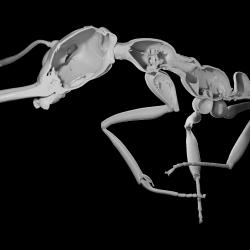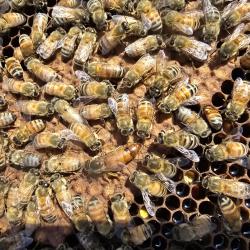14 Tenured/Tenure-Track Faculty Promotions Announced by UMD College of Computer, Mathematical, and Natural Sciences
The University of Maryland’s College of Computer, Mathematical, and Natural Sciences (CMNS) announced the promotion of 14 tenured/tenure-track faculty members, effective July 1, 2018.
Those promoted to the rank of Professor:
Volker Briken, cell biology and molecular genetics, joined CMNS in 2004. Briken studies how tuberculosis-causing bacteria manipulate infected human cells in ways that allow the disease to persist in patients.
Hal Daumé III, computer science, joined CMNS in 2010. Daumé develops methods for teaching computers to learn models of human language through natural interactions with humans. In addition, Daumé studies how to promote fairness and transparency in the learned models.
Michelle Girvan, physics, joined CMNS in 2007. Girvan combines methods from statistical physics, nonlinear dynamics and computer science to develop network science tools that can address problems in computational biology and sociophysics.
Laurent Montési, geology, joined CMNS in 2007. Montési studies the dynamics of fractures and molten rock inside planets including Earth and Mars, and the satellites of Jupiter and Saturn, with the goal of modeling the formation of features such as mountains, volcanoes, mid-ocean ridges and deep-sea trenches.
Min Ouyang, physics, joined CMNS in 2004. Ouyang combines nanoscale ultrafast laser technology with synthesis of nanomaterials at the atomic scale for applications that range from quantum information processing to novel textile technology.
Yanir A. Rubinstein, mathematics, joined CMNS in 2012. Rubinstein works on problems in mathematical analysis and partial differential equations, as well as differential geometry, algebraic geometry and convex geometry. His work also touches on the interface of pure and applied mathematics in problems in optimal transport and numerical analysis. He recently co-edited a book titled Directions for Mathematics Research Experience for Undergraduates.
Joshua Singer, biology, joined CMNS in 2012. Singer uses the mammalian retina as a model to study how the behavior of neurons and their connections affect the output of neuronal circuits. The results of Singer’s work may contribute to therapies for human diseases that affect visual processing.
Nathan Swenson, biology, joined CMNS in 2015. Swenson investigates the ecology and evolution of trees and forest dynamics in response to global change, on scales ranging from individual species' genomes to entire forest ecosystems.
Wade Winkler, cell biology and molecular genetics, joined CMNS in 2011. Winkler studies how bacteria regulate genes at the RNA level with the goal of uncovering regulatory features in disease-causing microbes and finding potential targets for new antimicrobial compounds.
Those promoted to the rank of Associate Professor with Tenure:
Jordan Boyd-Graber, computer science, rejoined CMNS in 2017. Boyd-Graber uses machine learning to teach computers how to talk to and learn from humans.
Suvi Gezari, astronomy, joined CMNS in 2012. Gezari uses space- and ground-based observations to discover and characterize transient and high-energy astronomical phenomena such as tidal disruption events, in which a supermassive black hole tears apart a star.
Vedran Lekic, geology, joined CMNS in 2011. Lekic develops and applies methods for imaging the interior of Earth and other planetary bodies, primarily by using vibrations on and inside Earth called seismic waves. He also researches new ways to better describe and quantify how geologic activity in Earth's deep interior affects the creation and destruction of surface structures.
Efrain Rodriguez, chemistry and biochemistry, joined CMNS in 2012. Rodriguez studies and searches for novel compounds that can be used as superconductors, which are materials that conduct electrical current with zero resistance when below a critical temperature.
Dennis vanEngelsdorp, entomology, joined CMNS in 2012. VanEngelsdorp studies diseases in honey bee colonies, identifies and promotes management systems that promote bee colony health, and monitors the health of pollinator species.
###
Media Relations Contact: Irene Ying, 301-405-5204, zying@umd.edu
University of Maryland
College of Computer, Mathematical, and Natural Sciences
2300 Symons Hall
College Park, MD 20742
www.cmns.umd.edu
@UMDscience
About the College of Computer, Mathematical, and Natural Sciences
The College of Computer, Mathematical, and Natural Sciences at the University of Maryland educates more than 9,000 future scientific leaders in its undergraduate and graduate programs each year. The college’s 10 departments and more than a dozen interdisciplinary research centers foster scientific discovery with annual sponsored research funding exceeding $175 million.







